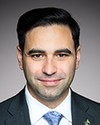Let's take it one step further. In fact, in the way that the program eligibility is described, students who are receiving the Canada emergency student benefit, which offers as much as $2,000 under that benefit, are eligible. In addition, students who are employed are also eligible for the Canada student service grant.
I think this is important, and I know this is your area of expertise. Obviously, I'm not an employment lawyer, but it's clear that the interpretation manual clearly identifies a distinction between an employee and a volunteer. That distinction is the one that I have read. That is the key criterion in outlining a difference between the two.
In my time remaining, Mr. Chair, I'd like to ask Mr. Aylward a question.
Mr. Aylward, I forget which of my colleagues it was—it could have been Ms. Koutrakis—who raised the question about the public service, asking your view specifically about the public service being best-placed, as you put it, to offer administration of the program. But this wasn't just a program that was meant to advertise a volunteer opportunity to student volunteers and to charity and not-for-profit organizations. The aim was to train volunteers. The aim was to make sure that they had the training they needed so that they could go straight away into helping organizations on the front lines of the COVID-19 response.
WE, as we've heard already at this committee, has an enormous network. They have a tie to 2.4 million students and to 7,000 schools right across the country.
I put that to you, because in the context that we're in during this pandemic, public servants have been shouldering an incredible burden doing such a great job, but working from home, administering so many different programs and tending to all sorts of needs.
Is it really unreasonable to think that a third party with such an enormous network could be relied upon to carry out the administration of this program?

